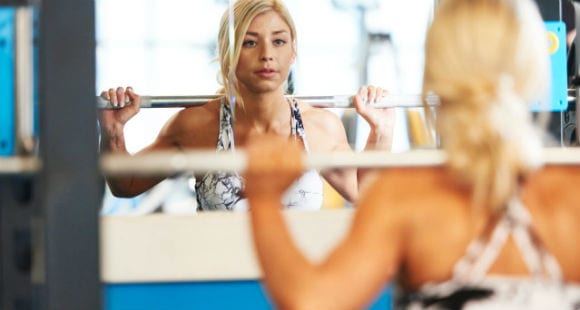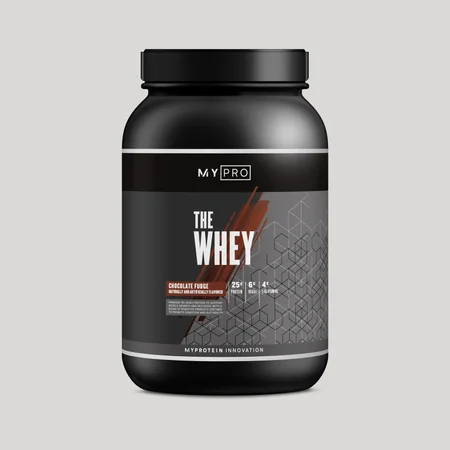How To Use A Smith Machine… The CORRECT Way

Ah yes, we’ve all made fun of (or defended) this piece of equipment before. Right alongside creatine and Planet Fitness everybody who has used a smith machine has an opinion about it. For all of those who haven’t heard of this machine by name, you have more than likely used it or seen it in action at your local gym. This machine looks like a power rack, with the one difference being that the bar is fixed, or attached on either side to sliding bars, and has hooks at various points to rerack the weight as well as an adjustable safety mechanism to catch the bar in case you drop it.
The point of a smith machine is to be able to do everything a power rack can, but without needing to move the safety bars on either side or the height of the bar holder. Another added advantage is you don’t need a spotter when you’re lifting to failure because you can re-rack it at the bottom and top portion of any lift.
The Problem With the Smith Machine
Now you might be wondering, why do hardcore gym goers across the world opt out of using this machine for free weights and consider it a useless piece of equipment? The concept that using the smith machine will do more harm than good is a correct statement in some situations, while it can be useful in others. The main flaw with smith machines is the idea that it takes the balance out of exercises since it is fixed on either ends. Without activation of small stabilizer muscles that barbell training effectively stimulates, they in turn become underdeveloped. An under developed muscle can lead to imbalances and can eventually cause injury once an individual switches from using the smith machine to barbell exercises. This isn’t always the case though, if your uses of the smith machine aren’t constant, i.e. you alternate between free weights and fixed bar workouts, you don’t need to worry about this issue.

The other problem most don’t realize when they use a smith machine is that every nine out of ten lean back at about a 5 degree slant (there are older models that go vertical with no slant, but they are slowly being replaced by the slanted version). At a glance this minimal slant doesn’t seem to be that big of a problem, until you try to do heavy compound exercises on a fixed bar. For example when looking at an individual from the side perform a barbell back squat, the bar path throughout the entire range of motion should be straight up and down. When you perform a back squat on a smith machine, the slant is pushing your body slightly forward which is not the natural bar path you need to correctly keep good form. This isn’t much of a problem when a smith machine is used sparingly and you primarily use barbells to do compound lifts. But when this is your default movement over free weights you will develop not only muscle imbalances from the lack of activation in stabilizer muscles, but you will also develop a bad natural bar path and be unable to comfortably barbell back squat if you ever stop using the smith machine (without having to learn the correct form all over again). This concept can be applied to most exercises which is why the majority of serious lifters have the general rule of thumb to block out the smith machine and classify it with other useless equipment such as the ab/adductor machines.
How to Use the Smith Machine Correctly
With all that being said, there are a few limited exercises you can effectively do on the smith machine. Most of the exercises that require you to load weight onto the machine and/or need to be done standing should be done with your body leaning with the vertical bars to give the feel of a vertical bar path. These exercises are exclusively isolation, and only target one certain muscle group to limit the amount of stabilizer muscle that would be needed to perform the movement. The first is standing calf raises, where the smith machine is actually preferred by many bodybuilders due to the fact that taking the balance out of standing barbell calf raises can create a better isolation movement. Anyone who has tried doing standing barbell raises with heavy weight on a non-fixed bar is extremely difficult and hard to focus on contracting your calves. With the smith machine you can put a lift under the bar (whether it be a wooden box or a plate) that is a few inches off the ground, letting your heels hang off, and get a full contraction by going all the way down, holding for a second and feeling the stretch, then going all the way up on your toes feeling your calves contract fully. Of course there are standing shoulder-padded calf raise machines which can do the same movement, but anybody who doesn’t have access to this machine can substitute the smith machine version with little difference in calf hypertrophy.

Another exercise that can be done on a smith machine with little repercussions are heavy shrugs. When done with a barbell most people find they will tear their hands up before they reach a weight that is sufficiently heavy to stimulate their traps. Without resorting to straps or lifting gloves, the easier to grip and un-rack smith machine can be loaded heavy and has a safety mechanism in case your forearms give out and can save you from a possible injury. And like the calf raises, make sure you’re leaning slightly back to mimic a straight bar path. A few exercises that don’t require you to move the bar at all include: bodyweight rows, where you’re hanging from the bar a few inches off the ground with your feet out in front of you, and you pull yourself up towards the bar (trying to touch the bar with your chest) and lower yourself slowly. Another is incline pushes for beginners who can’t do a proper push up, and as your strength improves you can lower the bar closer to the ground until you get to the point where you can do them on the ground. And the last exercise is bit harder to execute, which is a skull crusher variation. In this exercise you’re in a close grip pushup position with the bar a few feet from the ground, and as you bend at the elbows you bring your head underneath the bar until you feel a stretch at your triceps, and then reverse the movement till you’re back into the starting position (you can increase the difficulty of this exercise by taking a few step out to become more parallel with the ground, the same as you would with the bodyweight row).
Take-Home Message
As you can see, there are many isolation and bodyweight movements that can be done better with a smith machine than without it or with a barbell. But keep in mind that most exercises will see superior results if done with free weights, most importantly compound exercises that recruit many large muscle groups and smaller stabilizer muscles. If your gym has power racks and various barbell stations, I highly recommend using them over the smith machine when squatting or benching. If you’re going heavy and are afraid of failing a lift, as a fellow gym goer for a spot, it might result in a symbiotic friendship! And for those unfortunate individuals whose gyms don’t have barbells (and might or might not serve pizza on Monday, not to name names), don’t be afraid to use dumbbells for your primary compound lifts. This can make a workout like bench or squats even more challenging! Then once you grow out of the heaviest weights they have to offer, it might be a sign that you need to move on to a different gym.











